Auto review: Taking the sci-fi Tesla Cybertruck to work on the farm
Published in Business News
STRATFORD, Virginia — If I had pulled up to the Lee family home in 1776 in a Tesla Cybertruck, they would have thought I was a time traveler from the future.
Which is not much different than the reaction I received when I pulled up in 2025.
I took a Cybertruck on a weekend trip with Mrs. Payne this fall to help prepare Stratford Hall, the historic home of signers Richard Henry Lee and Francis Lightfoot Lee, for next year’s 250th anniversary of the Declaration of Independence. Our Turo rental was mobbed by Stratford volunteers, staffers and board members as if I had driven onto campus in a Tron Light Cycle.
If the Ford F-150 is America’s best-selling pickup, then Cybertruck is its most famous. Six years after its wild Silicon Valley introduction, the electric pickup still creates a buzz.
From its radical shape to its face-flattening speed to its self-driving capabilities, Cybertruck is a celebrity that looks like it rolled off a sci-fi movie set. Bladerunner, Tron, Mad Max — take your pick. When I wasn’t giving thrill rides to just about everyone on the 1,800-acre Stratford farm, the truck was proving itself a useful Swiss army knife hauling cargo.
It is still a rarity — particularly in places like rural Virginia, where full-size work trucks are everywhere — with its rich, $82K starting price and propensity to attract domestic terrorists who want to blow it up. I was encouraged by the truck’s enthusiastic reception, a promising sign the furries have moved on to other targets. Still, the truck's high price and sluggish sales are surely a disappointment to Tesla.
With Cybertruck, CEO Elon Musk was determined to jump-start the EV revolution in the market’s highest-volume segment. But the high price of batteries — and their inherent towing limitations — has kept Cybertruck (and other EV pickups) from competing in mass-volume, $40K truck business fleets.
Cybertruck competes against premium, country-club trucks like the Ford F-150 Raptor, Ram 1500 RHO, Chevy Silverado High Country, GMC Hummer EV and Ford Lightning Platinum EV.
In truth Cybertruck is a class of one, the most radical vehicle of the 21st century.
Begin with its polarizing design. Everyone has an opinion. The truck’s militaristic vibe skews male, but female reactions were all over the map.
Very futuristic.
It’s ugly.
Can you take a picture of me with the Tesla so I can share with my kids?
Where’s the machine gun turret?
I’ve driven Tesla’s distinctive model lineup extensively, and Cybertruck’s design is the most extreme. Yet, once inside, I was reminded how similar its operation is to its siblings. iPhone simple aesthetics. Horizontal lines. Mono-screen housing most controls: mirror/steering position, climate controls, even shifting.
To a non-Tesla user, it’s an alien landscape.
Exiting Metro D.C.’s Reagan National Airport, I barked my destination to the truck — “Navigate to Tesla Supercharger in King George, Virginia” — then didn’t touch the wheel for the next 48 miles. As I tuned Sirius XM stations, Cybertruck drove itself through D.C. traffic, the I-495 Beltway and Maryland routes 210 and 301 before exiting to fill up on electrons for the weekend ahead.
The FSD (Full Self Driving) system has made steady strides since its 2020 introduction. The truck slowed down to avoid a rogue trash can in the road and executed round-abouts with aplomb. On other occasions it maneuvered uncomfortably close to other vehicles, a reminder FSD still needs a chaperone.
Hands-free driving and stainless-steel skin just scratch the surface of its ambitions. Cybertruck’s also the first vehicle to market with variable electronic steering. Together with all-wheel steer, it makes the 19-foot-long beast feel smaller than it is.
Once Cybertruck had delivered me to the Supercharger in a Sheetz lot, I needed minimal steering input to maneuver it in place next to the charging stalls. The truck ID’d an open space, then backed itself in. Whoa. Not so “whoa” are Tesla charging cables designed for compact Model 3 and Model Ys — not Cybertruck ocean liners. The cord just reached the left-rear-fender-mounted NACS port.
Twenty-five minutes later, I exited onto rural-lanes roads with 80% battery capacity. Enough self-driving. Time to wring the truck’s neck over the twisted roads of Virginia’s Northern Neck.
ZOT!
Cybertruck blew by a line of traffic on two-lane Route 3 in the blink of an eye. Car and Driver recorded the 6,634-pound Cybertruck hitting 60 mph in just 3.9 seconds (the same as a 3,241-pound Porsche Cayman GTS, for goodness sake). On a narrow secondary road, it felt like warp speed.
That precise variable steering and adaptive shocks helped keep Cyberrocket grounded. But with all-terrain tires and air suspension, the Tesla’s natural habitat is off-road. Perfect for Stratford farm’s endless fields (or Detroit’s pocked streets).
I stopped at a Marathon service station outside Stratford and loaded the pickup’s cooler with ice. Cooler?
Tesla is synonymous with frunks (front trunk) and Cybertruck is no exception. But Tesla also sports a substantial, sub-bed locker space.
I emptied four bags of ice and only filled it halfway. Throw in a case of bottled water and I was a rolling fridge for thirsty Stratford staff.
Cybertruck’s six-foot bed is also unorthodox with its sloped panels. They make it difficult to load from the sides, but twin 110-volt plugs and a 240-volt plug are a tailgate party’s friend. The automatic tonneau cover is a welcome innovation for inclement fall weather. As I hauled beverage cases and event signage, protecting my cargo from a sudden change in weather was as simple as pressing the screen’s tonneau cover button.
I crisscrossed the farm’s dirt roads and grassy fields. Giant Pirelli Scorpion all-terrains are complemented by an air suspension so I could hike Cybertruck’s steel skirts to 16 inches off the ground. Shred a tire and it will cost (cough) $529 to replace. On the other hand, Stratford’s landscape chief Matt Peterschmidt approved of the simple drop-gate compared to competitor’s multi-action contraptions.
“Tailgates are the first thing to fail on a pickup,” he smiled.
In the middle of a field, I asked the truck to self-drive back to the main house and, remarkably, it found the fence opening and got to the main road.
At weekend’s end, I headed back to D.C., the truck’s 320-mile range proving accurate (I got 98% of predicted range) despite my heavy left foot.
Turo required the Tesla be returned with 80% battery range, which exposed the EV’s weakness compared to gas-powered peers: efficiency. Tesla’s Supercharger network was accessible — even in rural Virginia — but charging back to 88% (at the closest charger to the airport) from 32% added 40 minutes to my 90-minute journey. Cost? At 44 cents-per-kWh, the same as $2.75-a-gallon gas in an 18-mpg F-150 Raptor.
While it may look like it came from Mars, Cybertruck proved right at home at the historic preserve. Heck, in 1776 — after the shock wore off — the Lees probably would have adopted it for use in the American Revolution. After all, its stainless-steel skin is bulletproof.
Next week: 2026 Nissan Sentra
2025 Tesla Cybertruck
Vehicle type: All-wheel-drive, five-passenger pickup
Price: Base $82,235, including $1,995 destination charge ($90,235 with FSD as tested)
Powerplant: 123 kWh lithium-ion battery pack mated to dual electric motors
Power: 593 horsepower, 525 pound-feet of torque
Transmission: Single-speed automatic
Performance: 0-60 mph, 3.9 seconds (Car and Driver); towing, 11,000 pounds
Weight: 6,634 pounds
Range: 320 miles on full charge
Report card
Highs: King of the Road; FSD OMG
Lows: Polarizing styling; $$$$
Overall: 4 stars
— If I had pulled up to the Lee family home in 1776 in a Tesla Cybertruck, they would have thought I was a time traveler from the future.
Which is not much different than the reaction I received when I pulled up in 2025.
I took a Cybertruck on a weekend trip with Mrs. Payne this fall to help prepare Stratford Hall, the historic home of signers Richard Henry Lee and Francis Lightfoot Lee, for next year’s 250th anniversary of the Declaration of Independence. Our Turo rental was mobbed by Stratford volunteers, staffers and board members as if I had driven onto campus in a Tron Light Cycle.
If the Ford F-150 is America’s best-selling pickup, then Cybertruck is its most famous. Six years after its wild Silicon Valley introduction, the electric pickup still creates a buzz.
From its radical shape to its face-flattening speed to its self-driving capabilities, Cybertruck is a celebrity that looks like it rolled off a sci-fi movie set. Bladerunner, Tron, Mad Max — take your pick. When I wasn’t giving thrill rides to just about everyone on the 1,800-acre Stratford farm, the truck was proving itself a useful Swiss army knife hauling cargo.
It is still a rarity — particularly in places like rural Virginia, where full-size work trucks are everywhere — with its rich, $82K starting price and propensity to attract domestic terrorists who want to blow it up. I was encouraged by the truck’s enthusiastic reception, a promising sign the furries have moved on to other targets. Still, the truck's high price and sluggish sales are surely a disappointment to Tesla.
With Cybertruck, CEO Elon Musk was determined to jump-start the EV revolution in the market’s highest-volume segment. But the high price of batteries — and their inherent towing limitations — has kept Cybertruck (and other EV pickups) from competing in mass-volume, $40K truck business fleets.
Cybertruck competes against premium, country-club trucks like the Ford F-150 Raptor, Ram 1500 RHO, Chevy Silverado High Country, GMC Hummer EV and Ford Lightning Platinum EV.
In truth Cybertruck is a class of one, the most radical vehicle of the 21st century.
Begin with its polarizing design. Everyone has an opinion. The truck’s militaristic vibe skews male, but female reactions were all over the map.
Very futuristic.
It’s ugly.
Can you take a picture of me with the Tesla so I can share with my kids?
Where’s the machine gun turret?
I’ve driven Tesla’s distinctive model lineup extensively, and Cybertruck’s design is the most extreme. Yet, once inside, I was reminded how similar its operation is to its siblings. iPhone simple aesthetics. Horizontal lines. Mono-screen housing most controls: mirror/steering position, climate controls, even shifting.
To a non-Tesla user, it’s an alien landscape.
Exiting Metro D.C.’s Reagan National Airport, I barked my destination to the truck — “Navigate to Tesla Supercharger in King George, Virginia” — then didn’t touch the wheel for the next 48 miles. As I tuned Sirius XM stations, Cybertruck drove itself through D.C. traffic, the I-495 Beltway and Maryland routes 210 and 301 before exiting to fill up on electrons for the weekend ahead.
The FSD (Full Self Driving) system has made steady strides since its 2020 introduction. The truck slowed down to avoid a rogue trash can in the road and executed round-abouts with aplomb. On other occasions it maneuvered uncomfortably close to other vehicles, a reminder FSD still needs a chaperone.
Hands-free driving and stainless-steel skin just scratch the surface of its ambitions. Cybertruck’s also the first vehicle to market with variable electronic steering. Together with all-wheel steer, it makes the 19-foot-long beast feel smaller than it is.
Once Cybertruck had delivered me to the Supercharger in a Sheetz lot, I needed minimal steering input to maneuver it in place next to the charging stalls. The truck ID’d an open space, then backed itself in. Whoa. Not so “whoa” are Tesla charging cables designed for compact Model 3 and Model Ys — not Cybertruck ocean liners. The cord just reached the left-rear-fender-mounted NACS port.
Twenty-five minutes later, I exited onto rural-lanes roads with 80% battery capacity. Enough self-driving. Time to wring the truck’s neck over the twisted roads of Virginia’s Northern Neck.
ZOT!
Cybertruck blew by a line of traffic on two-lane Route 3 in the blink of an eye. Car and Driver recorded the 6,634-pound Cybertruck hitting 60 mph in just 3.9 seconds (the same as a 3,241-pound Porsche Cayman GTS, for goodness sake). On a narrow secondary road, it felt like warp speed.
That precise variable steering and adaptive shocks helped keep Cyberrocket grounded. But with all-terrain tires and air suspension, the Tesla’s natural habitat is off-road. Perfect for Stratford farm’s endless fields (or Detroit’s pocked streets).
I stopped at a Marathon service station outside Stratford and loaded the pickup’s cooler with ice. Cooler?
Tesla is synonymous with frunks (front trunk) and Cybertruck is no exception. But Tesla also sports a substantial, sub-bed locker space.
I emptied four bags of ice and only filled it halfway. Throw in a case of bottled water and I was a rolling fridge for thirsty Stratford staff.
Cybertruck’s six-foot bed is also unorthodox with its sloped panels. They make it difficult to load from the sides, but twin 110-volt plugs and a 240-volt plug are a tailgate party’s friend. The automatic tonneau cover is a welcome innovation for inclement fall weather. As I hauled beverage cases and event signage, protecting my cargo from a sudden change in weather was as simple as pressing the screen’s tonneau cover button.
I crisscrossed the farm’s dirt roads and grassy fields. Giant Pirelli Scorpion all-terrains are complemented by an air suspension so I could hike Cybertruck’s steel skirts to 16 inches off the ground. Shred a tire and it will cost (cough) $529 to replace. On the other hand, Stratford’s landscape chief Matt Peterschmidt approved of the simple drop-gate compared to competitor’s multi-action contraptions.
“Tailgates are the first thing to fail on a pickup,” he smiled.
In the middle of a field, I asked the truck to self-drive back to the main house and, remarkably, it found the fence opening and got to the main road.
At weekend’s end, I headed back to D.C., the truck’s 320-mile range proving accurate (I got 98% of predicted range) despite my heavy left foot.
Turo required the Tesla be returned with 80% battery range, which exposed the EV’s weakness compared to gas-powered peers: efficiency. Tesla’s Supercharger network was accessible — even in rural Virginia — but charging back to 88% (at the closest charger to the airport) from 32% added 40 minutes to my 90-minute journey. Cost? At 44 cents-per-kWh, the same as $2.75-a-gallon gas in an 18-mpg F-150 Raptor.
While it may look like it came from Mars, Cybertruck proved right at home at the historic preserve. Heck, in 1776 — after the shock wore off — the Lees probably would have adopted it for use in the American Revolution. After all, its stainless-steel skin is bulletproof.
Next week: 2026 Nissan Sentra
2025 Tesla Cybertruck
Vehicle type: All-wheel-drive, five-passenger pickup
Price: Base $82,235, including $1,995 destination charge ($90,235 with FSD as tested)
Powerplant: 123 kWh lithium-ion battery pack mated to dual electric motors
Power: 593 horsepower, 525 pound-feet of torque
Transmission: Single-speed automatic
Performance: 0-60 mph, 3.9 seconds (Car and Driver); towing, 11,000 pounds
Weight: 6,634 pounds
Range: 320 miles on full charge
Report card
Highs: King of the Road; FSD OMG
Lows: Polarizing styling; $$$$
Overall: 4 stars
____
©2025 www.detroitnews.com. Visit at detroitnews.com. Distributed by Tribune Content Agency, LLC.
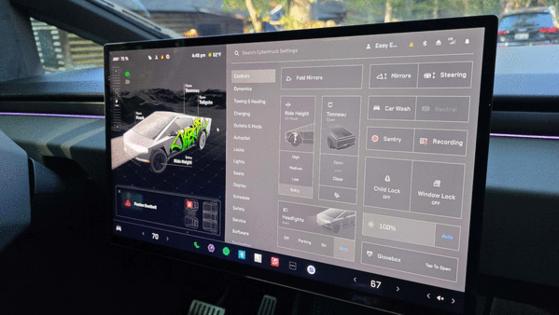
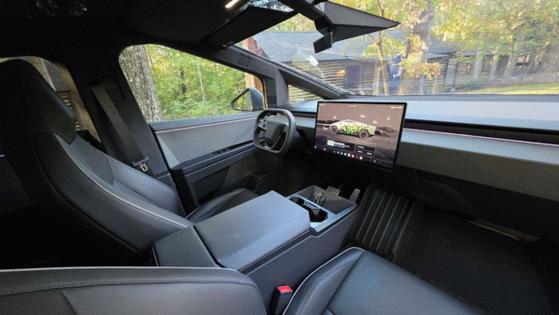
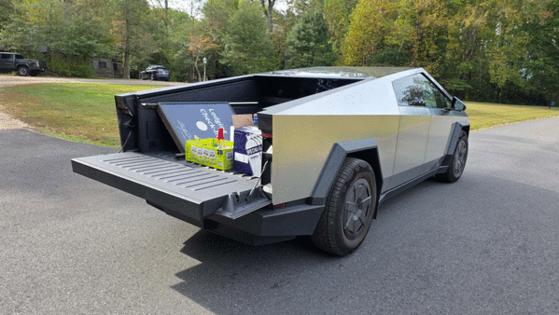
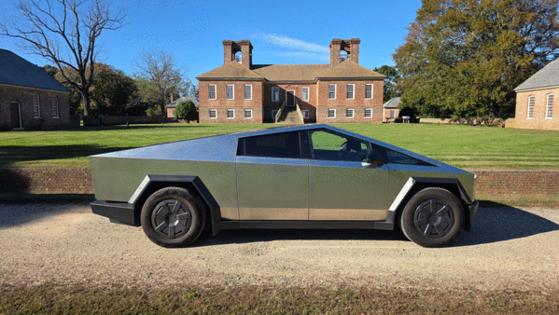






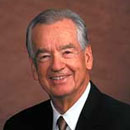








Comments